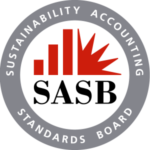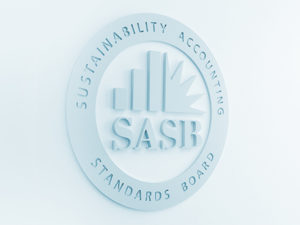GRI and SASB announce collaboration


Amid rising global demand for clarity in the sustainability reporting ecosystem, the Sustainability Accounting Standards Board (SASB) and the Global Reporting Initiative (GRI) are pleased to announce a collaborative workplan.
SASB and GRI understand that the sustainability disclosure landscape can appear complicated. For companies that use both standards, the reporting effort can be high. To help address this, the two organisations will collaborate to demonstrate how some companies have used both sets of standards together and the lessons that can be shared. GRI and SASB also aim to help the consumers of sustainability data understand the similarities and differences in the information created from these standards.
“GRI and SASB share the guiding principle that transparency is the best currency for creating trust among organisations and their stakeholders,” says Tim Mohin, Chief Executive of GRI. “Investors, policy makers, civil society and other stakeholders are demanding improved disclosure of information on sustainability impacts, including those likely to drive risk and opportunity in both the short and long term.”
“In a post-COVID world, companies will increasingly be expected to disclose their performance on a range of ESG topics,” says Janine Guillot, CEO of SASB. “The pandemic has demonstrated that so-called ‘non-financial’ information can indeed highlight material financial implications. This makes the collaboration between SASB and GRI, and the increased clarity it will bring for all stakeholders, all the more timely.”
Initially the collaboration will focus on delivering communication materials to help stakeholders better understand how the standards may be used concurrently. SASB and GRI will also develop examples based on real-world reports that demonstrate how the standards can be used together. These resources are planned to be delivered before the end of 2020. It is expected that this can lead to the identification of further collaboration opportunities.
Independence is important to both GRI and SASB Standards setting processes. This collaborative work plan may identify opportunities to consider how the GRI and SASB standards may be developed in the future. Decisions about standard setting, content of standards, and their interpretation are the sole responsibility of the independent standards-setting functions, which rest with the Global Sustainability Standards Board on behalf of GRI, and of the SASB Standards Board.
GRI and SASB provide compatible standards for sustainability reporting, which are designed to fulfil different purposes and are based on different approaches to materiality:
- SASB’s industry-specific standards identify the subset of sustainability-related risks and opportunities most likely to affect a company’s financial condition (e.g., its balance sheet), operating performance (e.g., its income statement) or risk profile (e.g., its market valuation and cost of capital).
- The GRI Standards focus on the economic, environmental and social impacts of a company, and hence its contributions – positive or negative – towards sustainable development. Users of the GRI Standards identify issues that are of primary importance to their stakeholders. If not already financially material at the time of reporting, these impacts may become financially material over time. They provide both the framework and supporting standards on a wide range of sustainability topics and are aligned with international instruments for responsible business behaviour.
Both GRI and SASB believe that providing clarity on the application of their reporting standards, and helping others understand how to use the sustainability performance data they provide, is critical to meeting the needs of all stakeholders.


